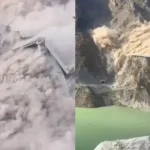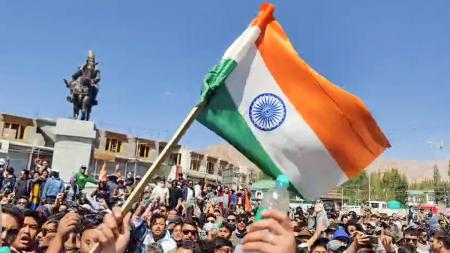For a number of years in Ladakh, there has been a history of peaceful yet ongoing protests for more self-rule and constitutional protections. But Wednesday, in the cold desert region at the border of India and China, turned violent, as young protesters clashed with security personnel in Leh, resulting in four fatalities and dozens injured. Events escalated from an initial peaceful hunger strike, culminating in a tragic confrontation that represents the level of frustration among the youth in Ladakh.
Flashing from Peaceful Sit-Ins to Urban Conflict
Since 2019, when New Delhi stripped Jammu and Kashmir of its special status and made Ladakh a federally governed territory without a legislature, local groups have pushed the same two demands: statehood and being covered by the Sixth Schedule of the Constitution of India, which provides for self-governance and protections for Indigenous people. In the intervening six years various civil society and religious organizations in Ladakh have engaged in organized rallies, marches, and hunger strikes.
This week, however, the protests escalated sharply. On the fifteenth day of a hunger strike organized by the Ladakh Apex Body (an alliance of social and political organizations), two senior hunger strikers collapsed and were rushed to the hospital. This upset many younger participants, who blamed the central government for stalling talks and engaged in violent protests, storming government buildings and torching the office of the ruling Bharatiya Janata Party (BJP) in Leh.
“Gen-Z Outburst”
Renowned educator and climate activist Sonam Wangchuk has been leading several peaceful protests, and he commented the events were an “outburst of Gen-Z.” He reflected that this is reminiscent of youth-led movements in South Asia in recent months, particularly the youth-led protests in Nepal earlier this year. He emphasized that he has never condoned violence but mentioned that he repeatedly warned if Ladakh’s demands continue to be neglected, the youth would become agitated.
“This is the bloodiest day in Ladakh’s history,” said Jigmat Paljor, coordinator of the Apex Body, as he confirmed the deaths of four protesters. “For years the government has promised activities, and today, people’s anger boiled over.” In response to the clashes was having the hunger strike temporarily suspended with a call for calm.
The Government’s Position
India’s Ministry of Home Affairs acknowledged the violence and stated that police fired upon an “unruly mob,” after more than 30 security personnel had been injured. Government officials also accused Wangchuk of intensifying the situation in his speeches by claiming that protestors were using Arab Spring-type protests, which Wangchuk firmly denied.
Meanwhile, New Delhi has listened to Ladakh’s sentiments regarding statehood or Sixth Schedule protections, yet still should it be administered directly, for strategic reasons due to Ladakh’s location along the disputed border with China.
Why Ladakh is Restive
Ladakh is unique in many aspects: a high-altitude and sparsely populated region where each of Buddhists and Muslims consist of about 40% of the population, and where more than 90% of the occupants are classified as Scheduled Tribes. Educational attainment, in terms of literacy, is quite high – approximately 97%; however, the unemployment rate amidst graduates is nearly twice the national average rate, at 26.5%.
The dissolution of Ladakh’s previous political structure has caused dissatisfaction to deepen and to fester. Residents say they have to rely only on centrally appointed bureaucrats for representation and governance and no longer have a local legislature. The choices available for government employment decreased dramatically, and concerns are emerging that in the absence of Sixth Schedule protections, the local economy and “Indigenous identity” will be increasingly vulnerable to external, non-Indigenous economic dominance.
“The young people are especially frustrated,” said political scholar Siddiq Wahid from Leh. “They have education, they have hope, and they don’t see a future. And that combination makes their anger totally unpredictable and dangerous.”
What Makes It Significant
Ladakh is not just another remote Himalayan landscape; it also represents a strategic frontier where India and China are positioned across a disputed border. Prolonged instability for Ladakh could complicate India’s security calculus in the area. At the same time, the protests also spotlight the challenges of governance in areas where local voice is not always present as the preferred choice among conflicting cultural perspectives.
The clashes on Wednesday are unprecedented. A population synonymous with peaceful civic engagement has now seen a generational shift through violence: younger, restless, and impatient people who want answers right away. Whether New Delhi responds meaningfully to what Ladakh demands, or waits while the frustrations of this population are suppressed, will be the difference between whether Ladakh moves toward reconciliation or deeper chaos.












More Stories
Who is Dr. Shaheen Shahid? The Professor-Turned-Jaish Recruiter Arrested in a Terror Module Case
350 Kg Explosives and Rifle Found Near Delhi: Two J&K Doctors Arrested in 15 Days
Delhi UPSC Aspirant Murder Case: Forensic Student, Ex-Boyfriend, and Friend Held in Chilling Crime